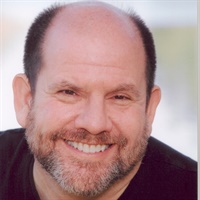Information
CC19 Workshop 08 (CE Audio Stream) - Introduction to a Psychobiological Approach to Couple Therapy – Part 1 - Stan Tatkin, PsyD, LMFT
Original Program Date :
Length: 1:55:42
Description: PACT offers a fast-paced, polytheoretical approach that blends attachment theory, arousal regulation, and developmental neuroscience. This workshop trains therapists to assess microexpressions, distinguish defenses from deficits, and use creative interventions to move couples toward secure functioning. Emphasizing strategic, somatically informed techniques, PACT equips clinicians to work effectively with high-conflict and complex relational systems.
Syllabus Description: PACT is a non-linear, poly-theoretical approach that fuse theories of attachment, developmental neuroscience, and arousal regulation. PACT is quickly gaining a reputation for effectively treating couples typically thought of as challenging.
This two-part workshop will introduce attendees to this psychobiological model, the forensic-like techniques employed to obtain information rapidly, the skills required to quickly read and assess microexpressions and micromovements and other somatic signalling, the use of creative and sometimes outrageous interventions, how to regulate difficult partners and couples as well as oneself, how to identify and work with various presentations of insecure attachment, how to differentiate psychological defenses from neurological deficits, how to recognize and deal with partner acting out, how to get partners into a light trance, how to determine attachment organization through interview and finding somatic markers, how to work strategically and improvisationally, and how to guide partners toward secure functioning. This approach is highly effective, not for the faint of heart, yet exceeding fun! Clinical video and live demonstrations included.
Educational Objectives:
- List at least five interventions for getting information from partners.
- Describe and define secure functioning in relationships.
- Apply at least two different techniques for managing acting out behaviors.
*Sessions may be edited for content and to preserve confidentiality*
Stan Tatkin, PsyD, MFT

Stan Tatkin, PsyD, MFT, is a clinician, researcher, teacher, and developer of A Psychobiological Approach to Couple Therapy (PACT®). He has a clinical practice in Calabasas, CA, where he has specialized for the last 15 years in working with couples and individuals who wish to be in relationships. He and his wife, Tracey Boldemann-Tatkin, developed the PACT Institute for the purpose of training other psychotherapists to use this method in their clinical practice.

